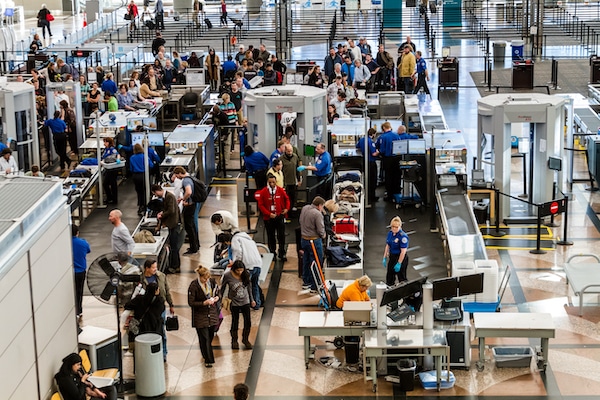Airport security is something that no one enjoys. Many people are afraid to fly because of the long lines and the anxiety that comes with a possible misplaced water bottle.
The airport’s advanced security technology should not be overlooked because of this frustration. Highly advanced Lenses Used in Airports for their X-ray machines and ID scanners. This should not be overlooked. Take a look at the lenses used in airport scanners.
What Lenses are Used for Airport Equipment and Machines?
Lenses Used in Airports Security Scanners
X-Ray Detection
Prior to boarding, all luggage must be scanned using an X ray scanner. You’re probably familiar with this procedure if you’ve flown before. Are you aware that optical science is at work?
The wavelength of X-rays is too small for the human eye to perceive. The wavelength of an X ray is visible through certain lenses. Different materials absorb X rays at a different rate. The scanners at airports can detect the contents of your bag in a matter of seconds.
X rays pass through your luggage as it passes through the X ray scanner (although some materials can absorb or block the X rays and prevent them from being seen by the scanner). The scanner’s lens can then create an image of what is inside your luggage using this data. The scanners show a darker image of dense materials that emit low-energy x rays. Airport security officials can quickly scan your luggage to determine the contents and hopefully pass you through without delay.
Full-body X ray scans are also performed using a similar technology. In these scanners, X-rays are forced to pass through extra materials in order to reduce their energy. This version of X ray technology is much safer and more suitable for human use.
Scanners for ID
ID scanners are another important type of lens used for airport security. ID scanners are complex machines that begin with a simple scan.
Airport ID scanners begin by creating a highly accurate, detailed optical rendition of your passport or ID. These image lenses are available in focal lengths between 8-112mm. They have a wide field of view. They are therefore well-suited to capturing your complete identification document.

What Lenses are Used for Airport Equipment and Machines?
After scanning the document, ID scanners should be able read the barcodes and any other data printed on it. Lasers, lenses and stored data make this another complex process simple.
The ID scanner must authenticate the barcode and image once they have been scanned. The process includes several high-level checks that are conducted, once again, automatically and in seconds. You can proceed to the next security checkpoint once you have been cleared.
It may take only a few seconds to scan an ID. As you can see, this is a complex process that has been refined over years by advances in computer and optical science.
And once you’ve gone beyond airport security, there is an even wider array of aviation lenses in use onboard your airplane. To learn more about the science behind optics and lenses, be sure to follow SUPERIOR® Optics for future updates.
Related Posts
Choosing the Right Surveillance Camera Lens for Optimal Security Coverage
"Ensure comprehensive security with the right surveillance camera lens. Optimal coverage, clarity, a...




